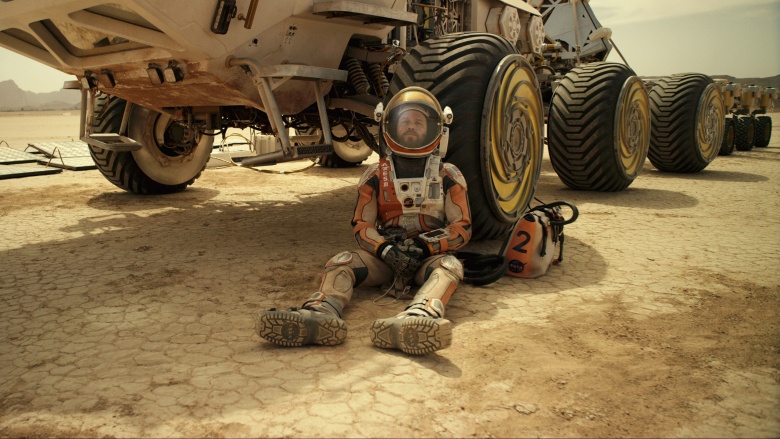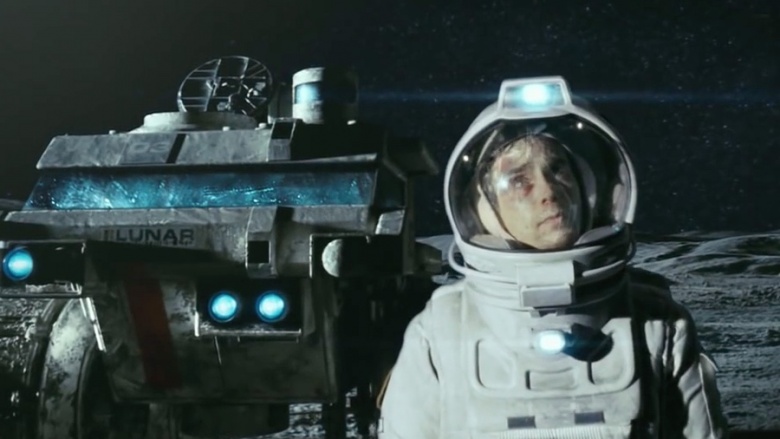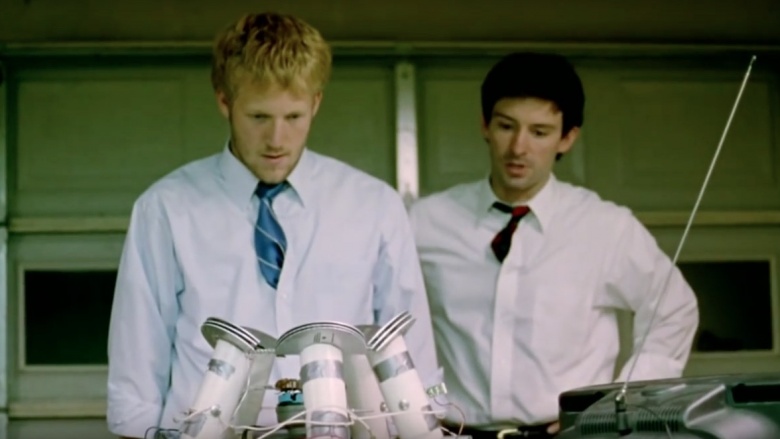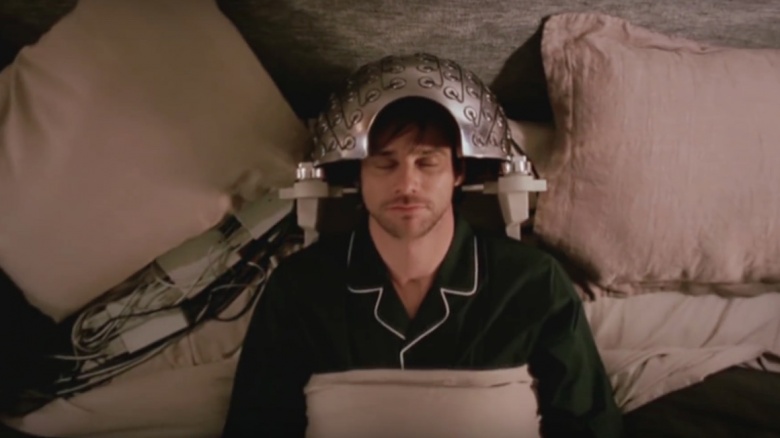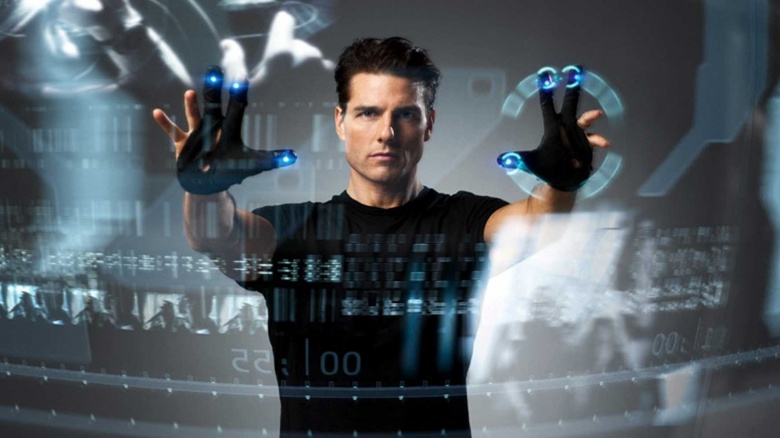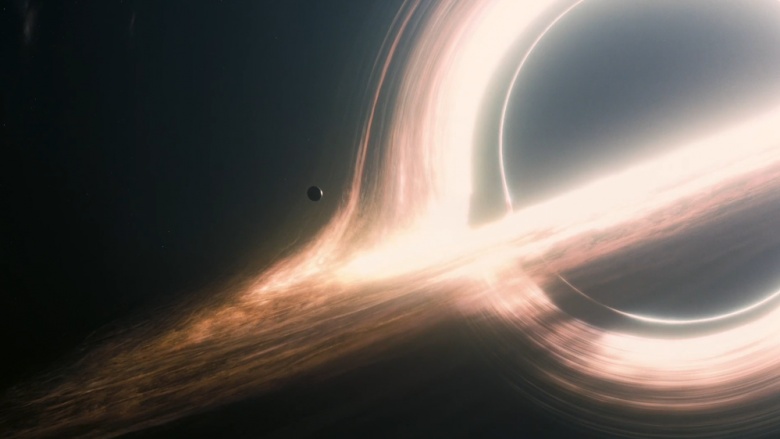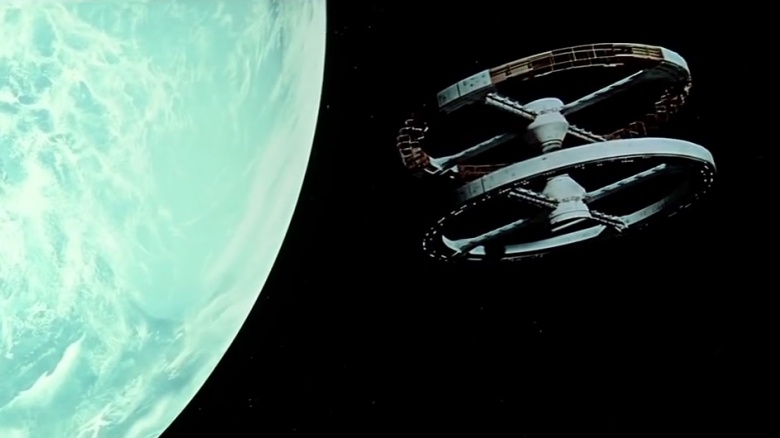Fictional Movies That Actually Got Science Right
Whenever a new sci-fi movie gets released, scientists love jumping at the chance to tear out and exposing all the things that movie has gotten wrong. But sometimes, movies do get the science right. To prove it, here are just a few movies that have received the science community's stamp of approval.
The Martian (2015)
Aside from depicting the difficulties of establishing life on Mars, The Martian has also been noted for the attention to detail paid to the science involved. Even Hayden Planetarium director and perennial bubble-burster Neil deGrasse Tyson has applauded the film for its accuracy for several subtle details, like the depiction of gravity on Mars. Since Mars' gravity is only 30 to 40 percent that of Earth's, this accounts for the slow fall when things drop. Also, it's what enables the buff Matt Damon to carry 200 pound tanks as though they weighed nothing, because on Mars, they do. In addition, Dr. Robert Zubrin told The Guardian that the gravity slingshot used to rescue Damon is not only possible, it's happened in real life. This technique was developed by mathematician Michael Minovitch and used to fling the probes Pioneer 10, Mariner 10, and Voyager 1 to Jupiter and beyond.
Moon (2009)
Before Moon hit theaters in 2009, Duncan Jones presented a screening of his film for NASA at Space Center Houston, and welcomed questions and complaints from them. Lo and behold, not many of the eggheads took issue with how he portrayed how lunar mining would look. In fact, they were amazed with his knowledge of things some of them were actually studying. For instance, one scientist mentioned that she was working on a way to use "lunar regolith—moon rocks and dirt—to make concrete, which is known as either lunarcrete or mooncrete, depending on who you talk to. He also received kudos for depicting an automated operation with one human overseer, as such an operation would be more cost effective. So just like his old man (that's David Bowie, in case you're wondering), Duncan Jones is way ahead of his time.
Primer (2004)
As far-fetched as it may seem, some scientists have claimed that time travel may be possible, and some films and TV shows have depicted it theoretically correct (or as correct as they can). Sadly, Shane Carruth's Primer, which follows two men who accidentally build a time machine in a garage, isn't one of them. In fact, no time travel science exists in this film. What is accurate is the gravity degradation on which Aaron and Abe originally work. According to the Meissner effect, superconductors can be used in order to degrade gravity, which means make things float. The only other accurate thing in Primer: that time travel is discovered by accident. Carruth credits John Bardeen's accidental creation of the transistor as inspiration for that, saying "there are plenty of stories in the history of innovation where you're heading towards one thing and there's a side effect that turns out to be the valuable thing." Now if someone could just accidentally create an iPhone battery that doesn't drain in less than one day.
The Fountain (2006)
This infinitely (or perhaps overly) complex movie from Darren Aronofsky is probably the last thing from which viewers would expect accuracy, but it has a hint of it. During the film, Izzi, diagnosed with a terminal brain tumor, waxes philosophical about the meaning of life and how all life, in fact all of creation, is connected. According to the late, great Carl Sagan, this is true, as he says everything that exists comes from "star stuff". What Sagan put so poetically is the fact that every element on the periodic table is forged in the nuclear hearts of stars and sent throughout the universe as these stars burnout and explode. (Fun fact: the explosions can last about a month.) So as Sagan said, everything on the planet from you to a blade of grass is made of the same stuff. How's that for having your mind blown?
Eternal Sunshine of the Spotless Mind (2004)
Criminally forgotten, the Jim Carrey-starring Eternal Sunshine of the Spotless Mind presents an accurate portrayal of selective, or targeted, memory loss. While the science to accomplish this doesn't exist as of this writing, how it works is accurately shown in the film. For this procedure to work, a protein synthesis in the brain would have to be blocked while a memory is triggered. As we learn and remember things, the shapes of our brains actually change, albeit on a minuscule level. When a memory is accessed, new connections between that memory and whatever's going on at the time of the recollection are created. Basically, new roads to that memory are paved. Easy, right? All that's missing is a machine accurate enough to pinpoint those connections and zap them. What's the holdup, science?
Minority Report (2002)
While accurately predicting when a crime will take place is next to impossible, some of the other actual science shown in Minority Report is not only possible, it already exists. Throughout the film, Tom Cruise and company use all sorts of neat gadgets that feature multi-touch interfaces and retina scanners. Not only was Spielberg able to predict this tech's creation, he pretty accurately foresaw just how pervasive it would become. Also since the film hit theaters, tech companies have begun developing some of the other stuff appearing in the film, like the robotic insects and personalized ads.
Interstellar (2014)
Interstellar, Christopher Nolan's spacebound Hail Mary after The Dark Knight Rises, quickly became the prey to nit-picking scientists everywhere, (right Neil deGrasse Tyson?). But while the Intelligentsia are quick to point out the film's flaws, the things it does portray correctly are often overlooked, like the film's depictions of black holes and wormholes. With the aid of Kip Thorne PhD., Nolan used Einstein's general relativity equations when it came time visually represent them. According to Thorne, they built the image so methodically and with such attention to detail that they "had 23 million pixels in the image, entirely based on solving Einstein's [equations]." Thorne's also quick to point out that they didn't find anything new, but they did develop new ways of creating these simulations. So not only was the film accurate in this instance, it actually contributed to science a bit.
2001: A Space Odyssey (1968)
Aside from depicting tech that we now have, Stanley Kubrick's epic, classic 2001: A Space Odyssey deserves attention for its depiction of the silence of space, where no one can hear a shuttle engine, let alone any screams. In addition, Kubrick consulted aerospace specialists for the designs of not only the film's ship, Discovery One, but the suits worn by the astronauts as well. He tasked the specialist with designing spaceships accurate down to the buttons, levers, and lights. Their biggest design contribution: the lack of an aerodynamic shape to the shuttle, as such a thing wouldn't be necessary in the vacuum of space. The result is not only a scientifically accurate film, but one with accuracy that was way ahead of its time.

